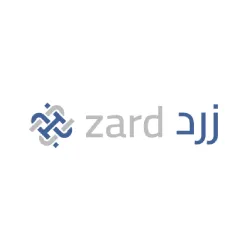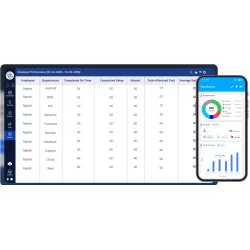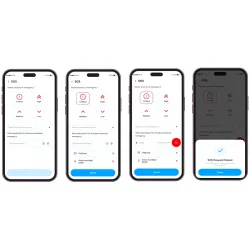
In the logistics and transportation industry, operational efficiency is essential for business growth, customer satisfaction, and cost control. While GPS tracking provides essential visibility, one of the most effective strategies to further improve performance is route optimization.
By intelligently calculating the best travel paths for each vehicle in your fleet, route optimization helps businesses reduce costs, shorten delivery times, and increase overall productivity. In this article, we explain what route optimization is, who uses it, and how your business can benefit.
What Is Route Optimization?
Route optimization is the process of determining the most efficient and cost-effective travel routes between multiple destinations. It takes into account real-time variables such as:
-
Traffic conditions
-
Delivery time windows
-
Road closures and construction
-
Weather patterns
-
Vehicle capacity and fuel consumption
-
Driver working hours and availability
These factors are analyzed using AI-powered tools to produce optimized routes that support timely deliveries and lower operational costs.
Why Route Optimization Is Important for Fleet Management
Without route optimization, businesses may face delayed deliveries, wasted fuel, missed service windows, and frustrated customers. Integrating route optimization into your fleet management system allows you to:
-
Increase daily delivery capacity
-
Reduce travel distance and idle time
-
Improve fuel efficiency
-
Enhance customer satisfaction
-
Simplify dispatch and logistics operations
Key Benefits of Route Optimization
1. Reduced Travel Time
AI-powered routing systems determine the fastest, most efficient path for each vehicle based on real-time traffic, job urgency, and location data.
2. Lower Fuel and Maintenance Costs
Minimizing travel distance and avoiding stop-and-go traffic leads to significant fuel savings and less vehicle wear.
3. Higher Customer Satisfaction
Timely, predictable deliveries with accurate estimated arrival times help build trust and improve service quality.
4. Better Driver Experience
Clear and efficient routes reduce stress, unnecessary detours, and frustration, leading to improved morale and productivity.
Common Challenges in Route Optimization
Despite its benefits, implementing route optimization presents a few challenges:
-
Limited Fleet Resources: Vehicle availability, fuel budgets, and driver schedules may restrict routing flexibility.
-
Complex Constraints: Multiple delivery stops, varied time windows, and traffic patterns add complexity.
-
Manual Limitations: Spreadsheets and manual methods cannot handle real-time variables or sudden changes.
-
Dynamic Conditions: Last-minute orders, weather disruptions, and road closures require adaptive, real-time systems.
The Role of GPS Tracking in Route Optimization
GPS tracking is essential for enabling effective route optimization. It provides:
-
Real-time location data
-
Live traffic insights
-
Historical route performance
-
Integration with optimization algorithms
-
Instant alerts for deviations or delays
ZARD’s fleet tracking platform combines GPS data with smart route planning tools to maximize control, visibility, and performance.
Who Uses Route Optimization?
Route optimization is widely adopted across various industries, including:
-
Delivery and E-commerce Companies: To maximize delivery volume and improve service quality
-
Logistics and Freight Operators: To manage complex, multi-stop routing under strict timelines
-
Field Service Businesses: To reduce travel time between client appointments
-
Public Sector and Utilities: To plan efficient routes for municipal services, maintenance, and inspections
-
Construction and Heavy Equipment Firms: To schedule material deliveries to remote or high-traffic sites
Regardless of industry, any organization operating a fleet can benefit from route optimization.
Final Thoughts
As customer expectations continue to rise and fuel costs fluctuate, the need for intelligent routing becomes more urgent. Route optimization is no longer a luxury—it’s a competitive advantage. Companies that invest in GPS-enabled route planning tools gain measurable improvements in:
-
Operational efficiency
-
Service reliability
-
Cost control
-
Fleet scalability
ZARD empowers businesses in Saudi Arabia and beyond with modern fleet management systems built for today’s challenges.
Frequently Asked Questions (FAQs)
1. What is route optimization in fleet management?
Route optimization is the process of determining the most efficient paths for vehicles to travel between multiple destinations. It considers traffic, distance, time windows, and other constraints to improve delivery performance and reduce operational costs.
2. How does route optimization reduce fuel consumption?
By minimizing detours, avoiding traffic congestion, and reducing idle time, optimized routes significantly lower fuel usage—resulting in savings of up to 40%.
3. What tools are needed for effective route optimization?
You need a GPS tracking platform integrated with AI-powered route planning software that can process real-time data, vehicle constraints, and delivery schedules.
4. Can route optimization work with small fleets?
Yes. Route optimization is beneficial for both small and large fleets. Even with five vehicles, businesses can increase delivery capacity and lower fuel expenses.
5. How does route optimization improve customer satisfaction?
By ensuring timely deliveries, providing accurate ETAs, and reducing delays, customers receive better service and gain more confidence in your brand.
6. Is manual route planning still effective?
Manual planning cannot handle the complexity and real-time nature of today’s delivery operations. Automated systems are essential for scalable and efficient route optimization.
7. What industries benefit the most from route optimization?
Industries such as logistics, last-mile delivery, e-commerce, field services, utilities, healthcare, and construction all benefit greatly from intelligent routing.
8. Does route optimization help with sustainability goals?
Yes. Reduced fuel consumption and optimized routes lead to fewer emissions and a smaller carbon footprint, aligning with corporate sustainability initiatives.
9. Can route optimization handle sudden order changes or delays?
Advanced systems adjust in real time, rerouting vehicles automatically in response to traffic updates, order changes, or road closures to maintain delivery efficiency.
10. How can I implement route optimization in my business?
Start by adopting a fleet tracking platform like ZARD, which includes built-in route optimization tools, real-time GPS data, and centralized control for smarter operations.
Related Articles
Start Optimizing Your Fleet Today with ZARD
Whether you're managing five vehicles or fifty, ZARD provides smart GPS tracking and route optimization solutions tailored to your operational needs. Our platform supports over 1,500 devices, offering real-time visibility, automated routing, and performance insights.
Contact us to learn how route optimization can improve your fleet’s efficiency and customer satisfaction.


